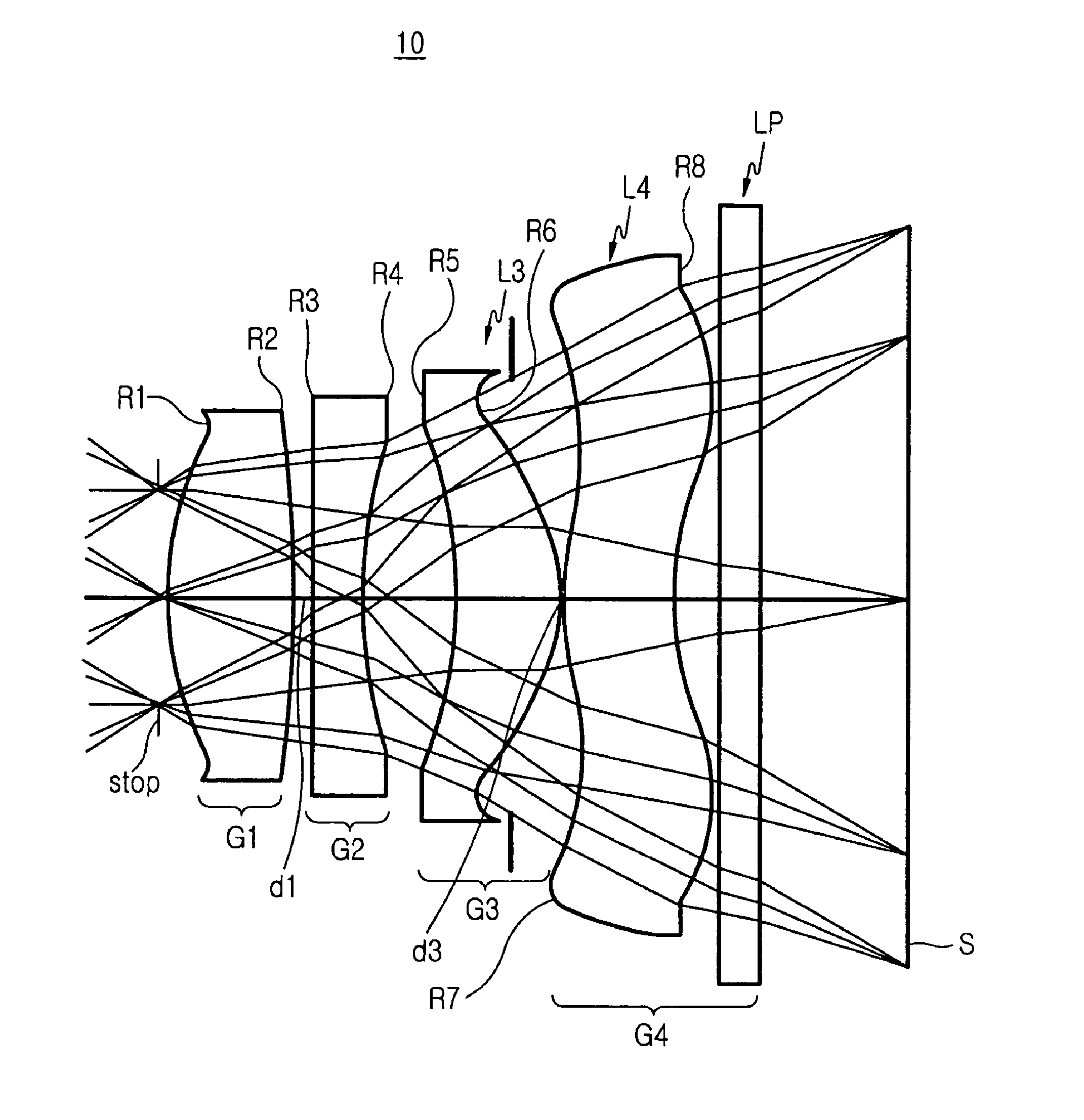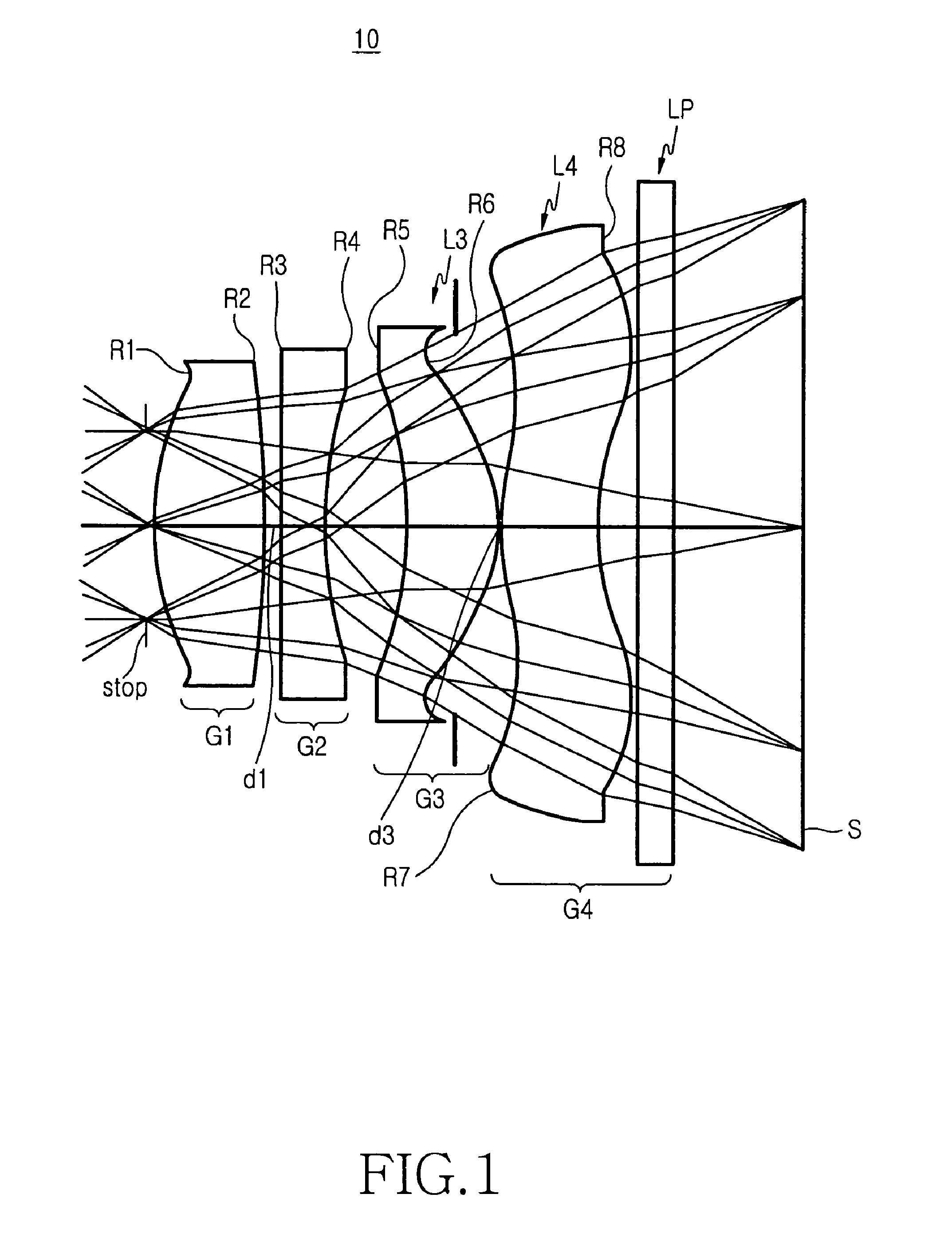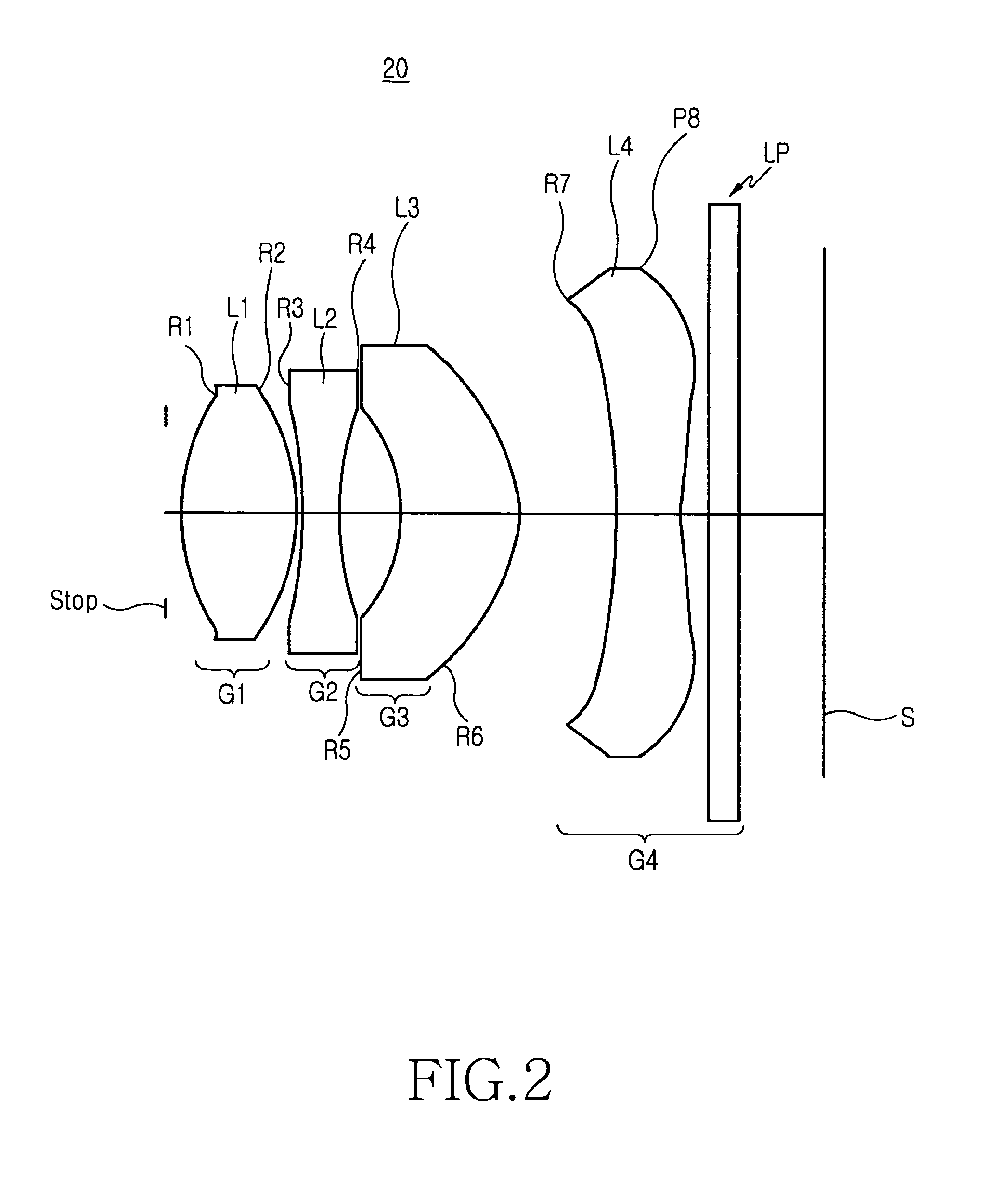Optical imaging system
a technology of optical imaging and optical lens, applied in the field of optical system, can solve the problems of image distortion, image flare, unsatisfactory aberration, etc., and achieve the effect of reducing volume and minimal deterioration over tim
- Summary
- Abstract
- Description
- Claims
- Application Information
AI Technical Summary
Benefits of technology
Problems solved by technology
Method used
Image
Examples
embodiment 1
[0050]The aspheric surfaces of the lenses constituting the optical imaging system according to the first embodiment are as presented in Table 4. The spherical surfaces and other conditions are as indicated in Table 1. The aspheric surfaces can be determined according to formula (9). The optical imaging system 10 according to the first embodiment includes a first lens group G1 having a positive refractive power, a second lens group G2 having a negative refractive power, a third lens group G3 having a positive or negative refractive power, a fourth lens group G4 having a positive or negative refractive power, a stop, and a thin film filter or an optical filter.
[0051]The stop is located on the incidence side of the optical imaging system 10, and the introducedincident light is output to the first lens group G1. The stop is used to regulate the amount of the light introduced into the optical imaging system 10, and is separated from the first lens group G1 by 0.097005 mm.
[0052]The first ...
embodiment 2
[0057]The optical imaging system 20 according to the second embodiment includes a first lens group G1 having a positive refractive power, a second lens group G2 having a negative refractive power, a third lens group G3 having a positive or negative refractive power, a fourth lens group G4 having a positive or negative refractive power, a stop, and a thin film filter or an optical filter (LP).
[0058]The first lens group G1 includes a first lens L1, both surfaces R1 and R2 of which are aspheric. The thickness of the first lens L1 is 1.174399 mm. The first lens L1 is separated from the stop by 0.158423 mm.
[0059]The second lens group G2 includes a second lens L2 having a refractive index of 1.7552 and a distribution valuedispersion constant of 27.53, and the second lens L2 has fourth and fifth surfaces R3 and R4 which are aspheric. Referring to Table 1, the second lens L2 is separated from the first lens L1 by 0.05 mm, and has a thickness of 0.363658 mm.
[0060]The third lens group G3 incl...
embodiment 3
[0065]The optical imaging system 30 according to the third embodiment includes a first lens group G1 having a positive refractive power, a second lens group G2 having a negative refractive power, a third lens group G3 having a positive or negative refractive power, a fourth lens group G4 having a positive or negative refractive power, a stop, and a thin film filter or an optical filter.
[0066]The first lens group G1 includes a first lens L1, both surfaces R1 and R2 of which are aspheric. Referring to Table 1, the thickness of the first lens L1 is 1.10000 mm. The first lens L1 is separated from the stop by 0.185390.118 mm.
[0067]The second lens group G2 includes a second lens L2 having a refractive index of 1.7552 and a distribution valuedispersion constant of 27.53. The second lens L2 has fourth and fifth surfaces R3 and R4 which are aspheric. Referring to Table 1, the second lens L2 is separated from the first lens L1 by 0.103084 mm, and the thickness thereof is 0.671321 mm.
[0068]The...
PUM
 Login to View More
Login to View More Abstract
Description
Claims
Application Information
 Login to View More
Login to View More - R&D
- Intellectual Property
- Life Sciences
- Materials
- Tech Scout
- Unparalleled Data Quality
- Higher Quality Content
- 60% Fewer Hallucinations
Browse by: Latest US Patents, China's latest patents, Technical Efficacy Thesaurus, Application Domain, Technology Topic, Popular Technical Reports.
© 2025 PatSnap. All rights reserved.Legal|Privacy policy|Modern Slavery Act Transparency Statement|Sitemap|About US| Contact US: help@patsnap.com



